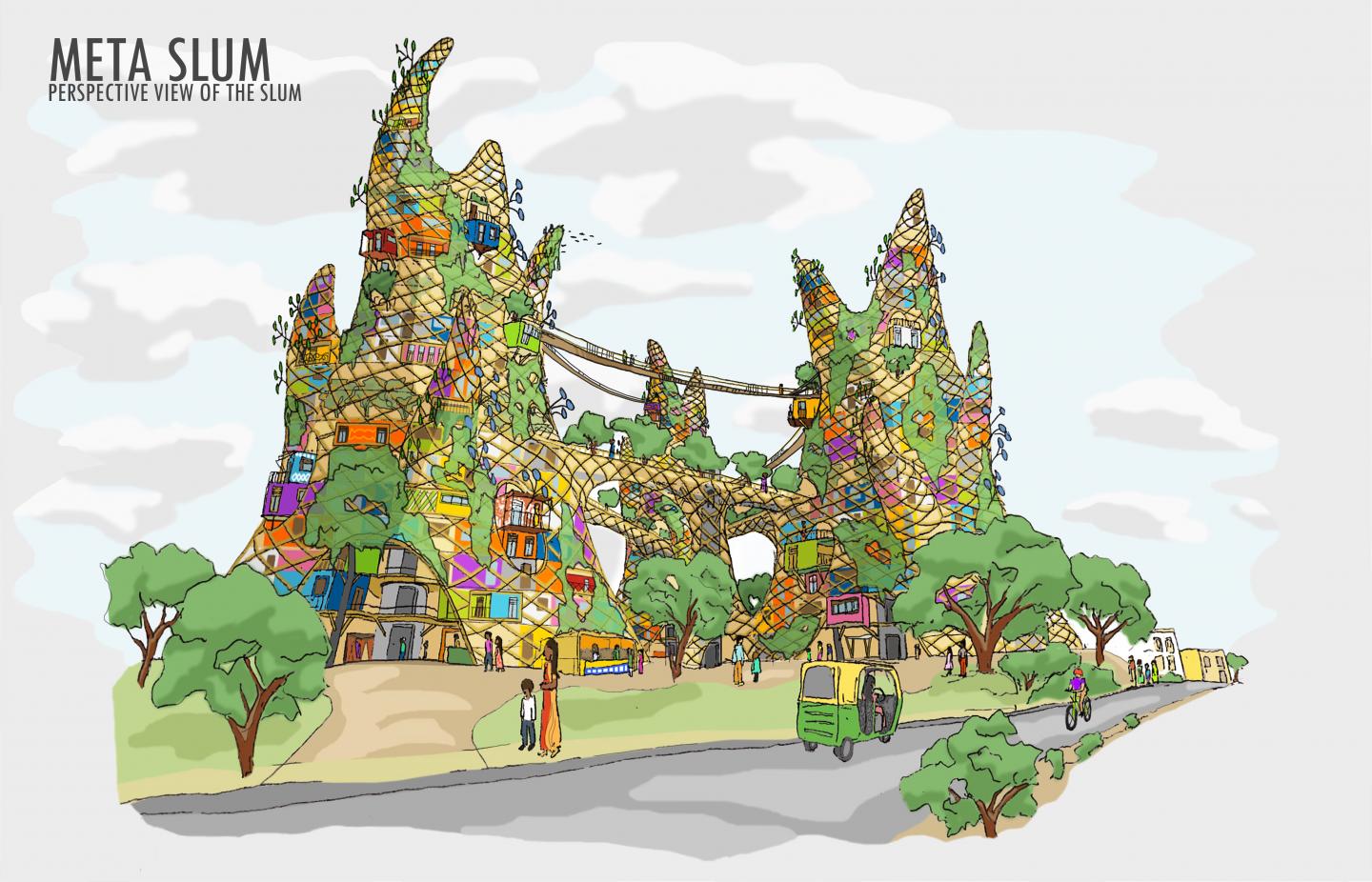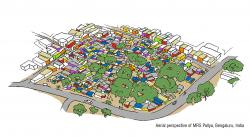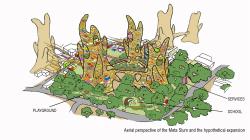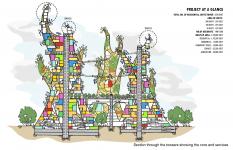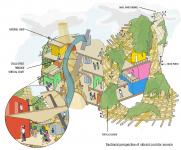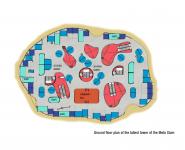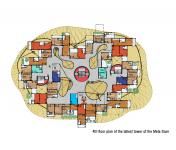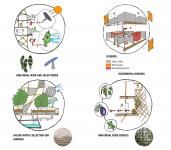Project Brief - Bengaluru, being the fifth largest metropolis in India, still has a significant part of its population living in slums. The action taken by the government in India has been certainly important in raising their quality of life. However there have been many aspects related to the slum dwellers way of life that has not been taken care of. As a solution to upgrade a slum, the peculiarity of each family should be translated in their new home. Some would like to carry animals with them or grow vegetables; some would love to have their walls painted with traditional patterns from their home village; others would like to transform or increase their house to welcome the new-born, etc.
Design Intent - Meta, from Greek, means beyond. The Meta Slum is a response that provides a better infrastructure for the jhuggi inhabitants, respecting their origins. The project thinks beyond giving people a home; it carries their lifestyle and allows incremental modifications and urban expansion. They would be even included in the construction of the building, according to their skills, augmenting the feeling of property. It would include the pros of both the above system and provide a unique solution which would be high rise considering the density factor as well.
Site Context - The site of our intervention is M. R. S. Pallya, an area of around 1.5 acres in the heart of Bengaluru. The entire area has very high density of mostly ground floor residential units, surrounded by adjacent zones of slightly better quality houses. M.R.S. Pallya, is the proposed location for new residential units for 1500 people from this and other nearby slum. Meta Slum would be the best alternate for the people that needs to be relocated. This concept is also planned to allow expansion for other adjacent residential areas in the future. Considering the population of the people that needs to be relocated and the need for more house, high rise towers are proposed. These tree-shaped towers physically connected to each other and reflect the organic way in which a slum normally develops. The open spaces in the ground serve as community amenities which includes school, primary health center, playground, parks and services for water and sewage. The design serves the idea of living in a city within a garden.
Blended Program - The towers mainly comprises of residential areas. However these are mingled with other activities such as small commerce and farming throughout the floors. The basement is used for services, ground floor acts as an interface of the building with the city. The remaining space gained by the high-rise construction is used for purposes of leisure, education, etc.
Vertical Community - The slum functions as a single organism with its own organs and circulation ways. The towers are connected by bridges at a medium height. These farming platforms have direct vertical connection to the exterior ground level to drain the produced goods. The dwellings have different typologies, some with two stories, to match the diverse nature of the families. The facade of the building is a permeable mesh, made out of bamboo that allows the growing of creepers to facilitate the tenant’s self-sustainability.
Urban Village - The residential units develop in an organic manner making the most of the natural ventilation and light provided by several vertical shafts. The tenants are provided with a four wall envelope in which they can do their internal division according to their needs. The circulation spaces are populated with informal seating areas and some commercial spaces like tea stalls, xerox shops or beauty parlors, or small community spaces like a creche or a common crafts workshop. The ground floor level works as an interface between the vertical community and the urban surroundings. The open areas are used for temporary markets, to sell the products created in the towers, (vegetables, fruits, clothes, crafts, etc.) that can expand to the surroundings, or, they can be used for different social functions such as wedding or engagement ceremonies, very frequent in the local culture.
2018
0000
Bamboo, Structure and Materiality – Meta Slum has a combination of both modern construction materials like concrete, steel and traditional, local materials like bamboo, wood, mud, etc. The concrete core along with the branching steel structure make it possible for the building to go high, while bamboo and mud are utilized for the flooring and walling in a pre-fabrication mode, reducing the loads on the main structure. These materials also contribute to more healthy living spaces, physically and emotionally.
Ecology and flexibility - The ecological efficiency of the towers is a main concern in the design. Power from renewable sources is generated from wind turbines and solar panels strategically placed, that supply energy directly to the users who own their source of energy. Along the bamboo splits mesh façade, there is a plastic mesh in which the water will condense, and be directed to their final destination – flushing water and farming. Each owner will be able to customize their façade in order to get an open view or to grow vegetables on the bamboo mesh. The users are responsible for the maintenance of their units.
Ar. Neelam Manjunath
Ar. Ruben Boas
